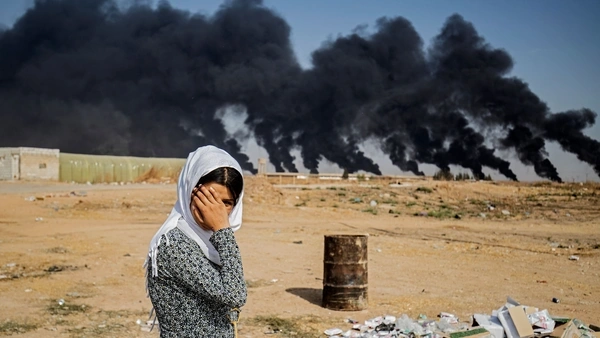Each year since 2008, the Council on Foreign Relations’ Center for Preventive Action (CPA) asks foreign policy experts to rank thirty ongoing or potential conflicts based on how likely they are to occur or escalate in the next year, and their possible impact on U.S. interests.
This year, “perhaps as an indication of rising concern about the state of the world, respondents rated more threats as likely to require a U.S. military response for 2020 than in any other Preventive Priorities Survey (PPS) from the last eleven years,” notes Paul B. Stares, CPA director and General John W. Vessey senior fellow for conflict prevention. “Of the thirty conflicts in this year’s survey, only two were judged as having a low likelihood of occurring in 2020.”
Experts continue to rank threats to the U.S. homeland as top concerns. For the second year in a row, a highly disruptive cyberattack on critical infrastructure, including electoral systems, was the top-ranked homeland security–related concern. A mass-casualty terrorist attack was a close second. A confrontation between the United States and Iran, North Korea, or with China in the South China Sea remain the biggest concerns overseas.
Many of the conflicts identified in previous years have remained concerns for 2020. For the first time, however, four threats from the Western Hemisphere were considered, and three were ranked as top concerns: organized crime–related violence in Mexico, the risk of mass migration from the Northern Triangle (El Salvador, Guatemala, and Honduras), and an intensification of the economic crisis and political instability in Venezuela.
Similar to previous years, experts judged Africa and the Middle East as the most crisis-prone regions in 2020. However, only one conflict was ranked as having a high impact on the United States: an armed confrontation between Iran and the United States or one of its allies.
Thirteen conflicts were identified as top priorities for the United States next year:
Impact: High
Likelihood: Moderate
A highly disruptive cyberattack on U.S. critical infrastructure, including its electoral systems
A mass-casualty terrorist attack on the United States or a treaty ally directed or inspired by a foreign terrorist organization
An armed confrontation between Iran and the United States or one of its allies over Iran’s involvement in regional conflicts and support of militant proxy groups
A severe crisis on the Korean Peninsula following the collapse of the denuclearization negotiations and renewed long-range missile testing
An armed confrontation over disputed maritime areas in the South China Sea between China and one or more Southeast Asian claimants (Brunei, Indonesia, Malaysia, Philippines, Taiwan, and Vietnam)
A severe crisis between Russia and Ukraine following increased fighting in eastern Ukraine and/or a major military clash in contested areas
Deteriorating economic and security conditions in the Northern Triangle (El Salvador, Guatemala, and Honduras), resulting in increased migration outflows from the region
Preventive Action Update
A quarterly newsletter from the Center for Preventive Action that provides a snapshot of global hot spots along with expert analysis on ways to prevent and mitigate deadly conflict.
Email Address
Impact: Moderate
Likelihood: High
Intensification of organized crime–related violence in Mexico
Increasing political instability in Iraq exacerbated by underlying sectarian tensions and worsening economic conditions
Escalation of violence between Turkey and various Kurdish armed groups within Turkey and/or in Syria
Continued violent reimposition of government control in Syria leading to further civilian casualties and heightened tensions among external parties to the conflict
Increased violence and political instability in Afghanistan resulting in further advances by the Taliban insurgency and potential government collapse
Intensifying economic crisis and political instability in Venezuela leading to further violent unrest and increased refugee outflows
CPA’s Global Conflict Tracker plots ongoing conflicts on an interactive map paired with background information, CFR analysis, and news updates.
The Preventive Priorities Survey was made possible by a generous grant from Carnegie Corporation of New York. The statements made and views expressed are solely the responsibility of the Center for Preventive Action.

No comments:
Post a Comment